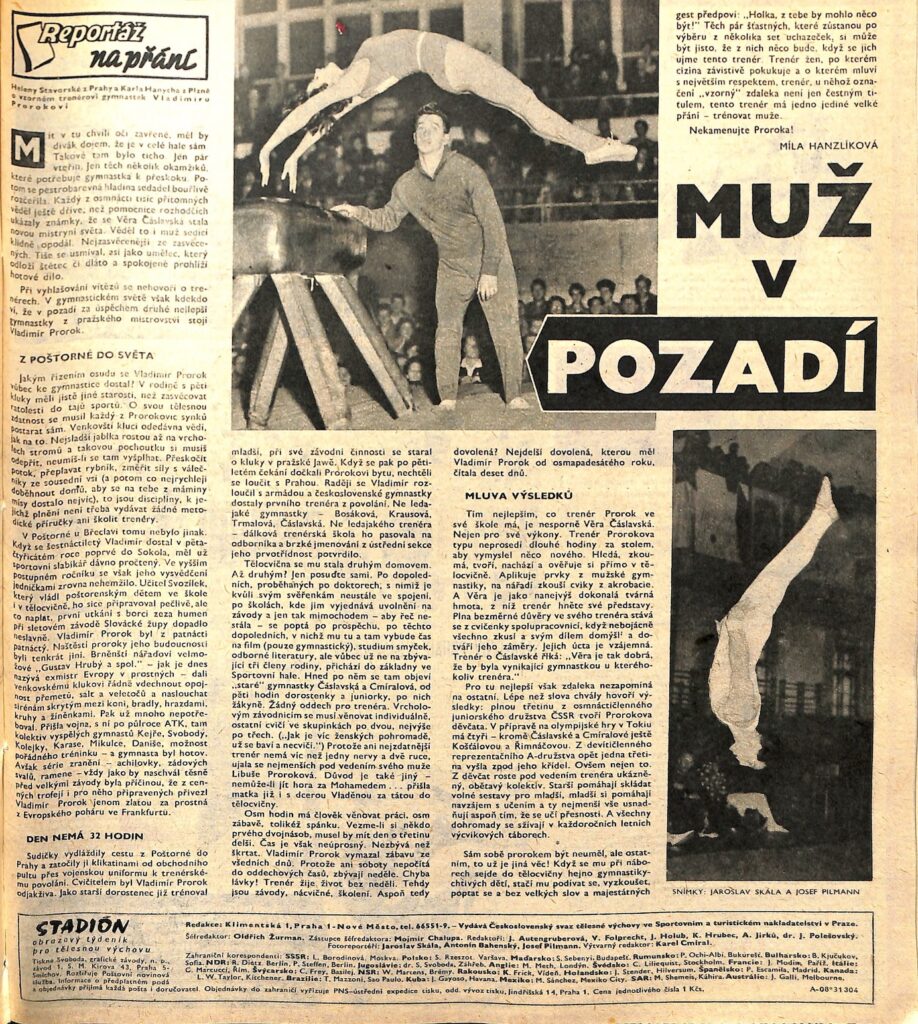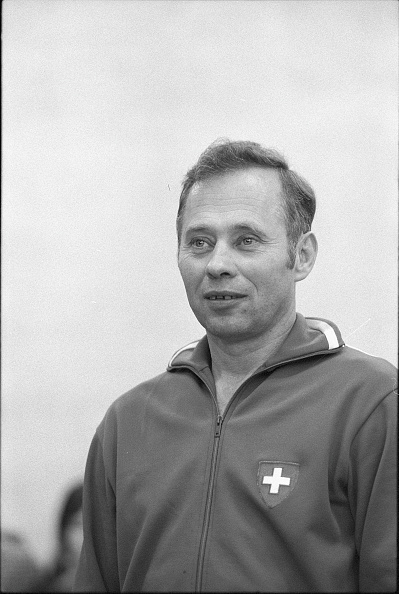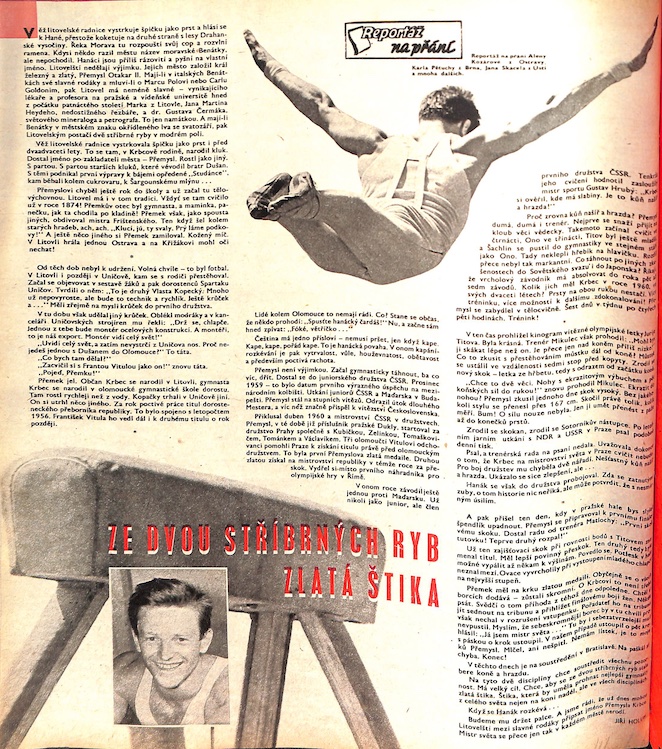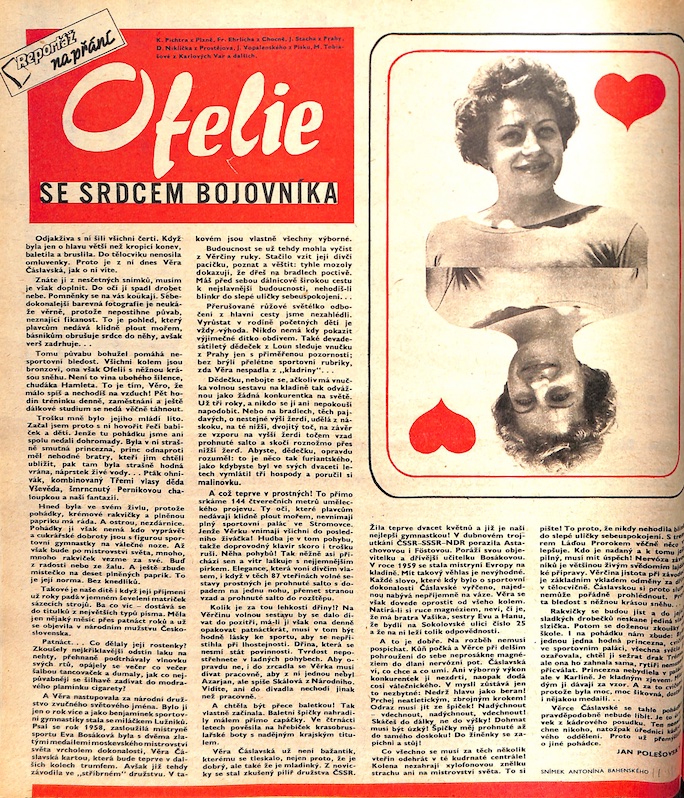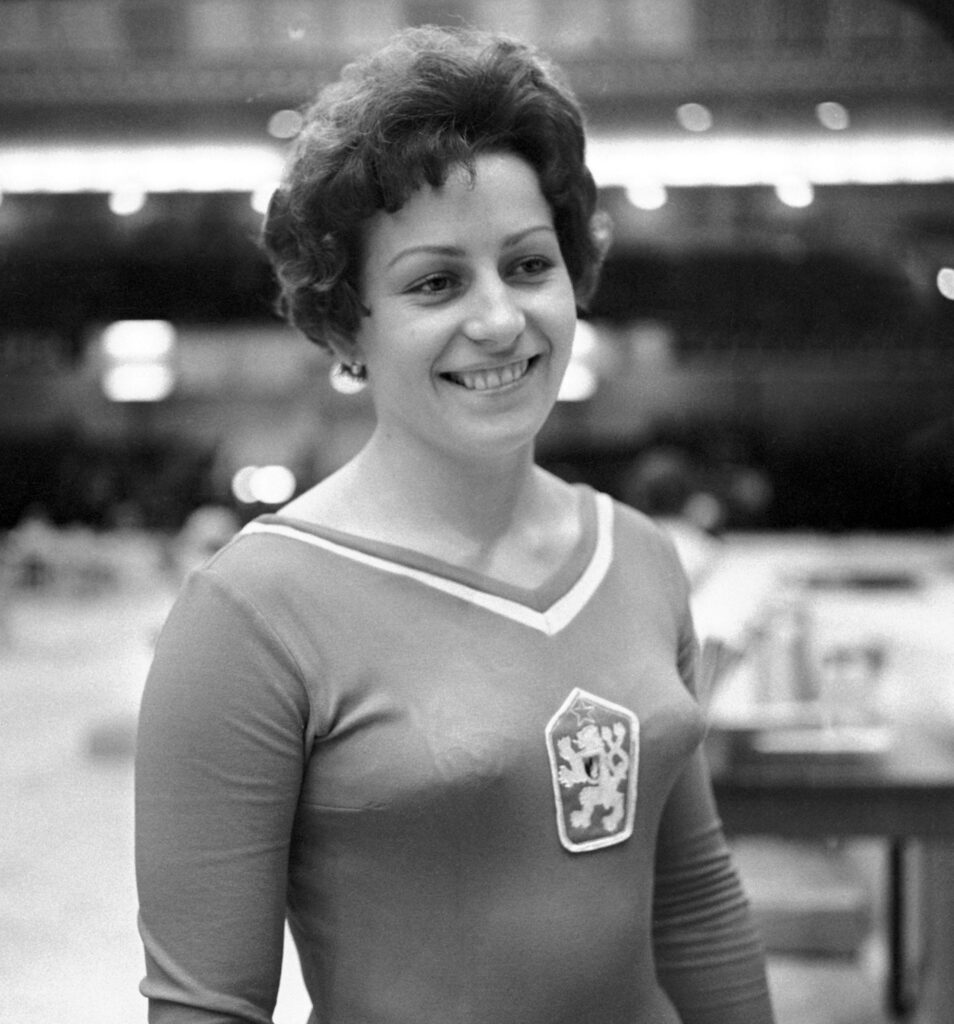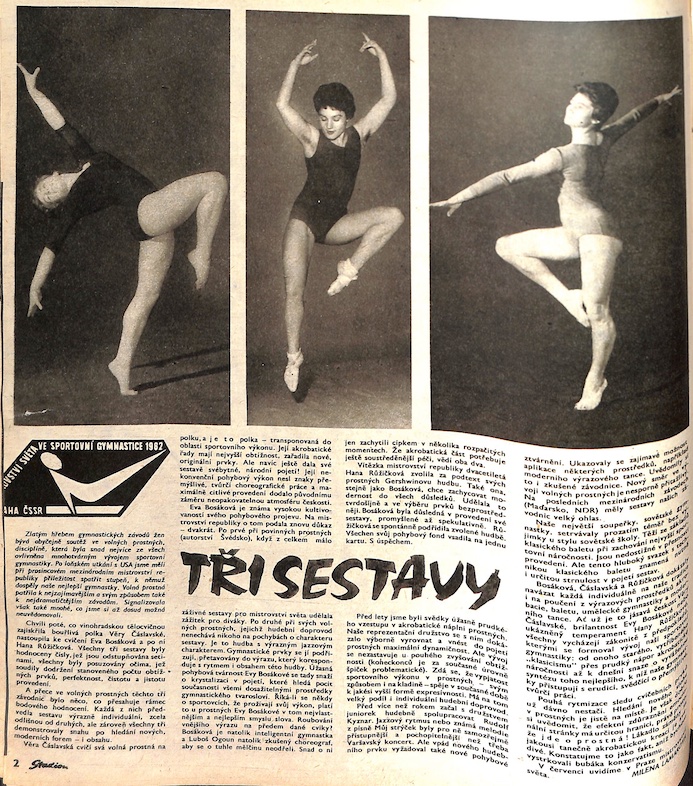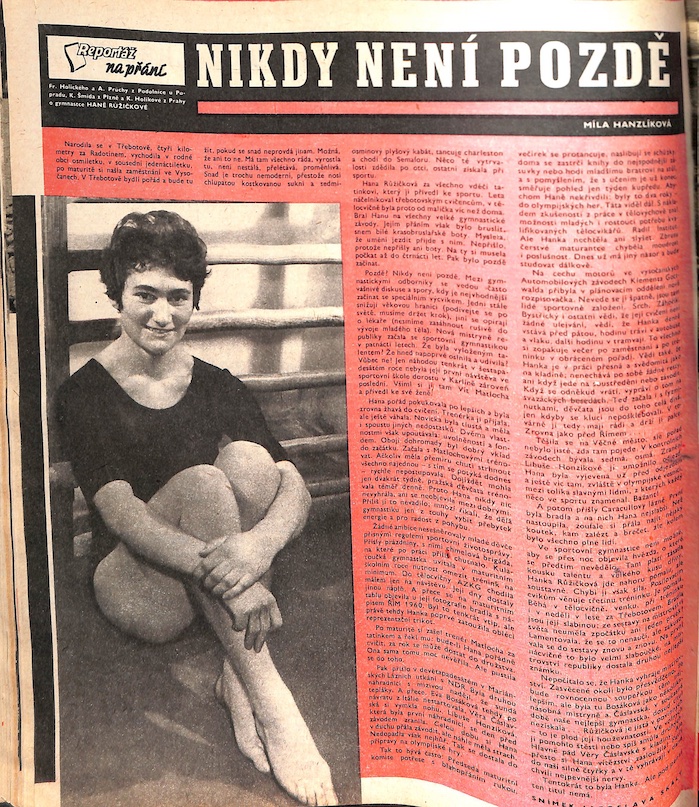In 1963, Japanese gymnasts traveled to Czechoslovakia for a dual meet. Not surprisingly, the Soviets, specifically Yuri Titov, made a trip to Czechoslovakia to film the routines, and the East Germans were there with their notepads.
According to an article in the Czechoslovak sports magazine Stadión, the Japanese men’s artistic gymnasts were breaking new ground on rings and high bar, while the Czechoslovak women’s artistic gymnasts were showing original elements on beam and floor. (Though, the Japanese women’s artistic gymnasts were the queens of turns on beam.)
Here’s a short account of what happened.
Reminder: This was a competition between the top teams in the world. The Czechoslovak men’s team finished third at the 1962 World Championships while the Japanese men finished first. The Czechoslovak women’s team finished second in 1962 while the Japanese women finished third.
